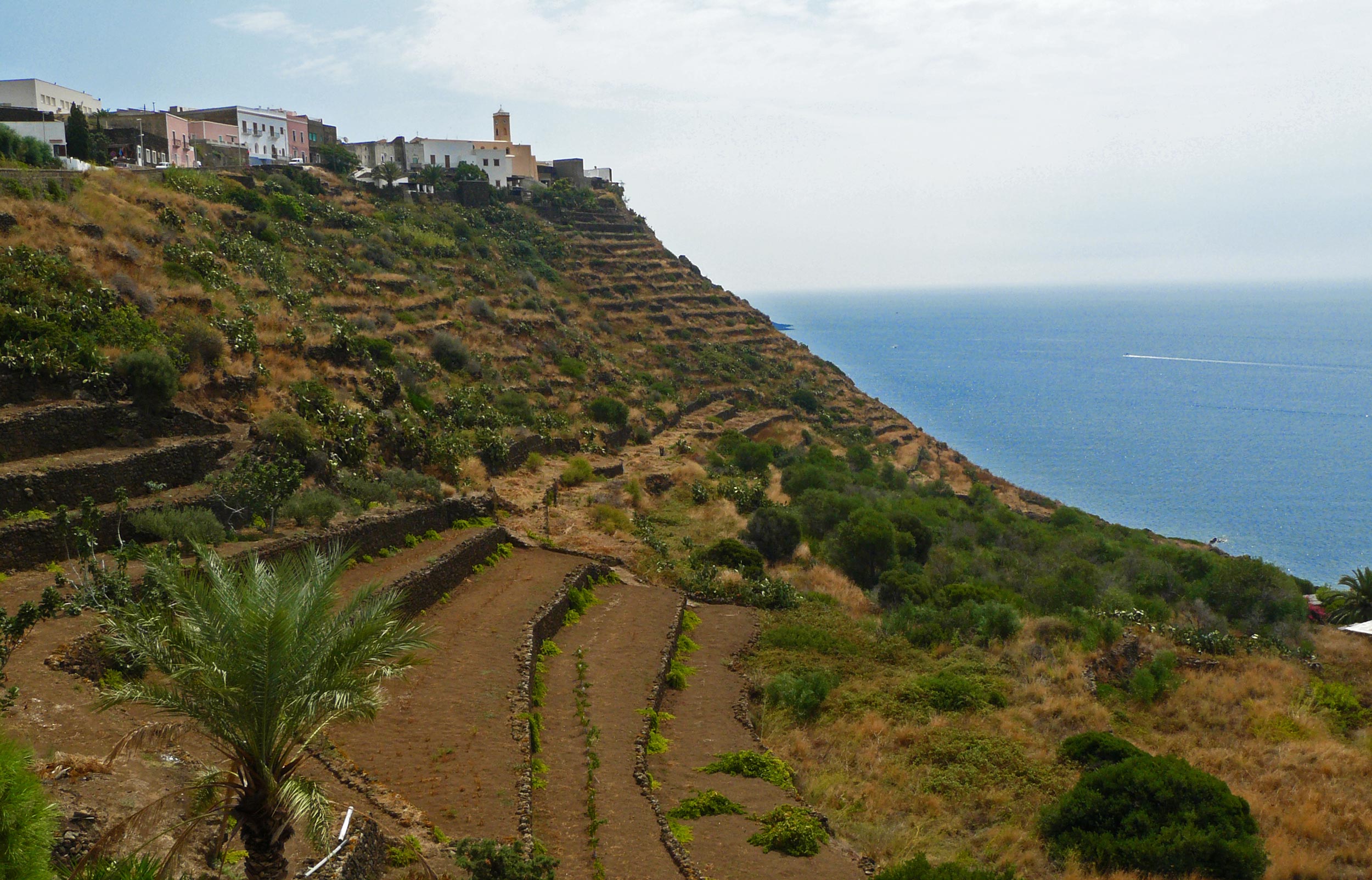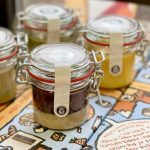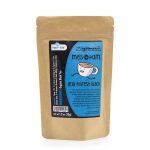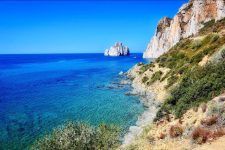Winds and Walls: Welcome to Pantelleria

In September, I visited Pantelleria, a small island in the Mediterranean midway between
Tunisia and Sicily. With 37 miles of sea separating the island from the next closest land, it’s as
isolated as anywhere I’ve ever been. Despite its location in the middle of the sea, the people of
Pantelleria have always been farmers, not fishers.
Those farmers have their work cut out for them. The island has no source of fresh water and
gets little rain. The soil is volcanic and very fertile, but that soil stretches across steep mountain
slopes. And all year long, relentless winds blow across the island. (In fact, the name “Pantelleria”
comes from the thousand-year-old Arabic name for the island, Bent El Riah, or “daughter of the
winds.”)
To make the land arable, the people of Pantelleria (called Pantescans) have carved the
mountainsides into terraces. The terraces are held in place by walls built of the island’s
ubiquitous, charcoal-colored volcanic stone. The walls are built a few feet taller than the level
of the ground to protect the low-growing plants from the harsh winds and to help conserve the
little water that is available. Behind these walls, Pantescans tend fields of capers, squat bushes
of Zibbibo grapes, and groves of Lilliputian olive trees that reach only as high as my waist. For
home use, many families also grow eggplants, peppers, tomatoes, potatoes, herbs, and perhaps
a citrus tree.
Built and maintained over the last millennium, the stony walls define and romanticize the
landscape. Fifty years ago, the walls extended nearly to the mountaintops with 85% of the
island’s land dedicated to agriculture. Today, that number has dropped to around 17%. It’s a
pity: without active maintenance, the walls will fall into disrepair and crumble.




Zingerman’s Art for Sale